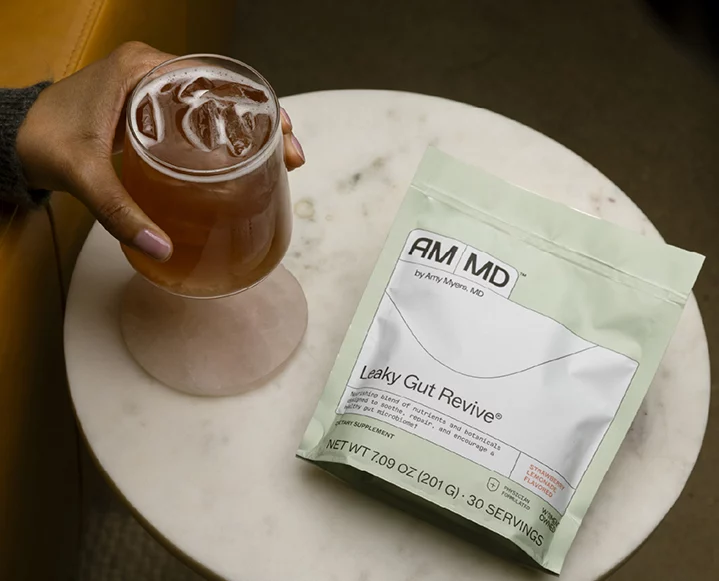Ever wanted to learn how to meal plan like a wellness editor? Michele Promaulayko has been at the helm of world-class media brands like Women’s Health and Cosmopolitan and is currently Editorial-Director-at-Large for THE WELL. In her new book, Sugar Free 3 she tackles one of the biggest health problems Americans struggle with today—sugar dependency—and provides a simple, actionable solution for evading its detrimental impact.
In the video above, Michele and registered dietitian Keri Glassman share step-by-step tips for how to read a nutrition label. But let’s get a (sugar-free) shopping meal plan down first…
Before writing my book, Sugar Free 3: The simple 3-week plan for more energy, better sleep and surprisingly easy weight loss, I didn’t realize my supermarket runs were sabotaging my health goals. When my fridge and pantry were bare, I’d head to the store, no plan in hand. I’d absentmindedly push my cart up and down the sprawl of aisles, inevitably landing in a danger zone—like the cookie and candy row. There I was vulnerable to all of the boxed and bagged goodies trying to seduce me from the shelves. Okay, I may be overdramatizing a little, but the truth is, the marketing language plastered on packaged food is super enticing…and sneaky AF.
A lot of the time, I wasn’t even making it to an actual store. Thanks to our increasingly busy schedules—and the all-too-accommodating rise of online food delivery, grocery shopping has evolved from a planned weekly ritual to an improvisational, as-needed activity. I’m all for getting a technological assist at times, but this approach to grocery shopping can lead to unhealthy eating.
The Best Grocery Store Strategy To Meal Plan + Meet Your Nutrition Goals
Unfortunately, many of us have come to view food shopping as a chore instead of an opportunity to boost our health and help us reach our wellness goals. The fact is, to be successful food shopper, you need a strategy. Here’s mine:
Map Out Meals | You don’t need to plan breakfast, lunch and dinner for the next 10 days, but you should plan out at least a few meals. There is so much healthy recipe inspo available, take a look! My Sugar Free 3 program is available as a video platform on the Openfit app, where there are tons of nourishing recipes, including yummy sugar-free ones I helped create.
Make a grocery list | Going to the store with a list will keep you focused and helps you avoid foods you don’t really want or need. (Bonus: It’ll probably save you money, too.) In addition to knowing what meals you want to make, plan to get a few grab-and-go snacks and easy breakfast staples, such as greens, eggs and avocado.
Chart a course for your cart | Always start with the perimeter of the supermarket. That’s where the mainstays of healthy meals will be located. Fruits, vegetables, proteins and low-fat dairy are almost always in the outer aisles. Load up on veggies and fresh produce. Not to be confused with taste the rainbow (the candy slogan, which you definitely shouldn’t follow), eat the rainbow is the nutritionist credo, which you should adhere to. Adding a full spectrum of colorful fruits and vegetables to your diet is a shortcut to total nutrition, overall health and weight loss. Healthy protein—chicken, fish, eggs, lean beef, turkey, pork and tofu—keeps you fuller for longer, and it helps to preserve fat-burning lean muscle, whether regularly work out or not.
Avoid the inner aisles | For the most part, this is where the junk lives: cookies, candy, sugary cereals and soda. Don’t tempt yourself.
Find healthy fats + flavor boosters | Healthy fats—such as those found in olive oil, avocados, nuts and seeds—are key to a nutritious diet. They keep you satiated and have been associated with heart and brain health. Also, I am a big fan of adding seasonings to my meals. They can add a ton of flavor with minimal calories. And some have antioxidant and metabolism-stoking benefits of their own. I’m talking mustard, hot sauce, vinegar, lemon, lime, fresh salsa, fresh and dried herbs and spices, sea salt, pepper, and blends like Everything But The Bagel seasoning (a personal fave). Experiment.
Outsmart the marketers | Food marketing can be really cunning and foods filled with sugar, artificial sweeteners, refined carbs and other unhealthy ingredients are often given a health halo to imply a benefit where there is none. Don’t get tricked. You might see labels on packages that list: natural, light, organic, healthy, sugar free, low fat, gluten free, and so on. These claims may mean something positive, but they also distract from the negative aspects of whatever else may be in the food.
Learn how to read a nutrition label | Food manufacturers hide sugar and other detrimental ingredients in products you’d never expect (like bread, salad dressing and tomato sauce) in order to make them more appetizing. That’s why it’s super important to learn how to read a food label so that you can definitively determine which foods (and beverages) to buy. When it comes to added sugars—that is, sugars that are added to foods when they are processed or prepared—one critical thing to realize is that you’re not just looking for grams of sugar on the nutrition panel. It’s also about spotting the sneaky sugar aliases. Ignore all of the language on the front of a food package and instead flip it over the see what’s actually in it. Identifying unhealthy ingredients is easier than you think.











